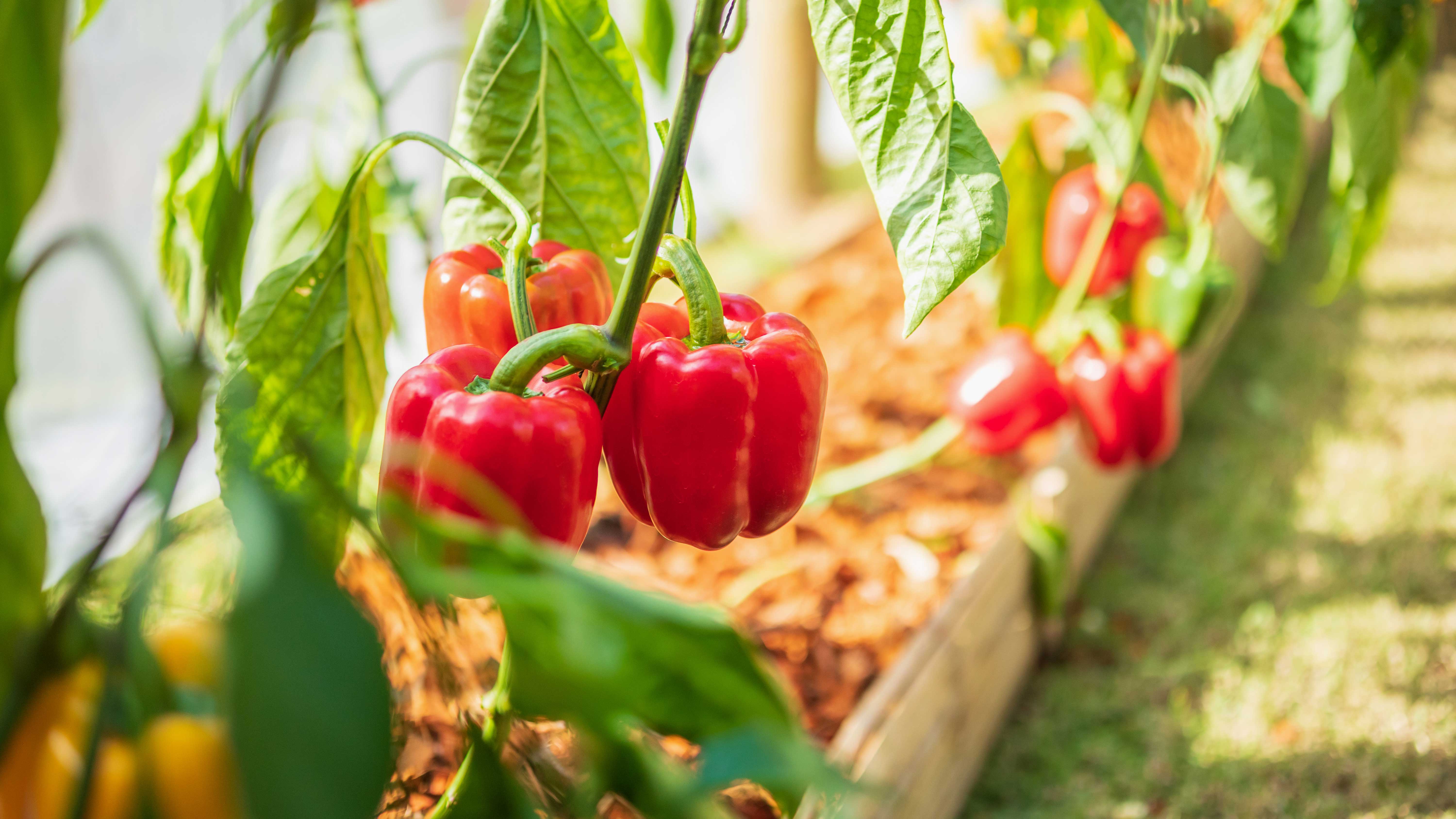How to overwinter pepper plants
Work out how to overwinter pepper plants for early crops next year


Looking for a jump start on next year’s harvest? Then knowing how to overwinter pepper plants is all-important.
Learning how to grow peppers and lovingly care for them during the winter months is really not that tricky and will reward you with strong, early growth and a healthy harvest. Often grown as annuals in temperate climes, these plants are perennials in their native Latin America and actually perform more successfully in their second year. Thanks to their well-established root system, they will happily send additional branches, more leaves, and larger fruit, so are well worth taking care of. Plus, these colorful vegetables will be a welcome addition to your winter garden ideas, so do think about the best pepper companion plants when planning a vegetable garden.
When thinking about the best winter plants for pots and borders, peppers might not be first on your list, but if do have these abundant plants in your garden, then learning how to overwinter them is certainly worth the effort and attention when planning a winter garden.
As tender exotics, chili and other bell peppers flourish outdoors when temperatures are consistently above 50℉ (10℃), but dip below that and they will begin to lose leaves and enter dormancy. If temperatures dive below 35℉ (1.6℃) the plants will die altogether, so take precautions and follow these expert tips to see these culinary favorites safely through to spring.
How to overwinter pepper plants
Whether you have just one cherished plant or a carefully curated collection of peppers, it is only worth overwintering the strongest and healthiest plants. Many plants towards the end of the growing season suffer from aphid attacks so check thoroughly before bringing them inside and spray with water and even an insecticidal soap to help keep them at bay.
The same can be said for overwintering geraniums and overwintering begonias; just two of the best winter flowers to plant – and protect.
Deciding on what action is needed, to see them through the colder months depends on your local climate and how you have been growing them.
Design expertise in your inbox – from inspiring decorating ideas and beautiful celebrity homes to practical gardening advice and shopping round-ups.

How to overwinter potted pepper plants inside
‘For potted pepper plants, simply bringing them inside and placing them near an unobstructed south-facing window is all that needs to be done,’ says Bob Z author of the blog, Chile Peppers.com. ‘Keep them in a sunny window and allow the soil's top layer to dry out slightly between watering. Plant pots should have good drainage – drip trays/tubs are needed to catch water run-off. As mentioned, it's normal for overwintered pepper plants to drop a lot of leaves when first brought indoors.’
Once outside temperatures climb consistently above 55℉ (12.7℃) and there is no chance of frost, potted plants can be returned outside.
How to lift and overwinter pepper plants
Growing pepper and chili plants in a border will ensure they get all the moisture and nutrients they need and give roots a growth-boosting free run too, but when temperatures begin to dip and there’s the first whiff of frost you will need to protect them and bring them inside.
‘Pepper plants in the garden can be dug up and placed into an appropriate-sized pot,’ explains Bob. Remove as much of the existing soil as possible, check the roots for any pesky aphids and remove if found before repotting in fresh, free-draining compost.
Mark McMullan, author of Thechileman blog says, ‘Dormant plants should be cut right back leaving only a small stump just a few inches above the soil line. Leaving dying vegetation encourages pests like whiteflies and also disease. Even after the most severe pruning, dormant plants will sprout new vigorous growth when the warmer spring weather returns, assuming of course they have made it through the winter.’

Journalist Jill Morgan has spent over 20 years writing and editing gardening, interior and property features. Titles she has worked on include The English Home, House Beautiful, Ideal Home, Houzz and Modern Gardens and she writes regularly for H&G as a Contributing Editor. Whilst she is a dab hand at renovation projects and DIY, she is happiest when out digging in the garden or planning a new border.